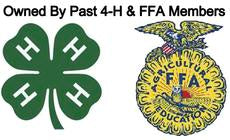Know How Your Electric Fence Works
A fence controller is the heart of an electric livestock fencing system. They come in a variety of shapes, sizes and colors. The fence controller is connected to a grounding system as well as the fence wire. This creates an open circuit. The circuit is completed when an animal touches both the fence wire and the ground at the same time. Electricity will pass down the fence wire, through the animal, into the soil, through the ground rods and up to the fence controller. This all happens instantaneously, and the animal receives a shock. Electric fencers are helpful in keeping your livestock in and harmful predators out.
A fence controller will not work effectively without proper grounding. For optimal results, you will need:
- A grounding system of three galvanized six-foot ground rods
- Three ground rod clamps
- Insulated hook-up wire
Ground rods can be galvanized or copper, six or eight feet in length and need to be spaced 10 feet apart.
How Will You Power the Fence?
If you have access to a 110-volt outlet, alternating current (AC) power is recommended. It is reliable and requires the least maintenance.
Depending on what type of power supply you have access to, you may need a battery-powered fencer instead. Different fencers use different battery types, but six-volt and 12-volt are the most common.
The fencer's battery must be kept charged in order for the fencer to operate. For this reason, some people choose solar panels to power electric fencers.





